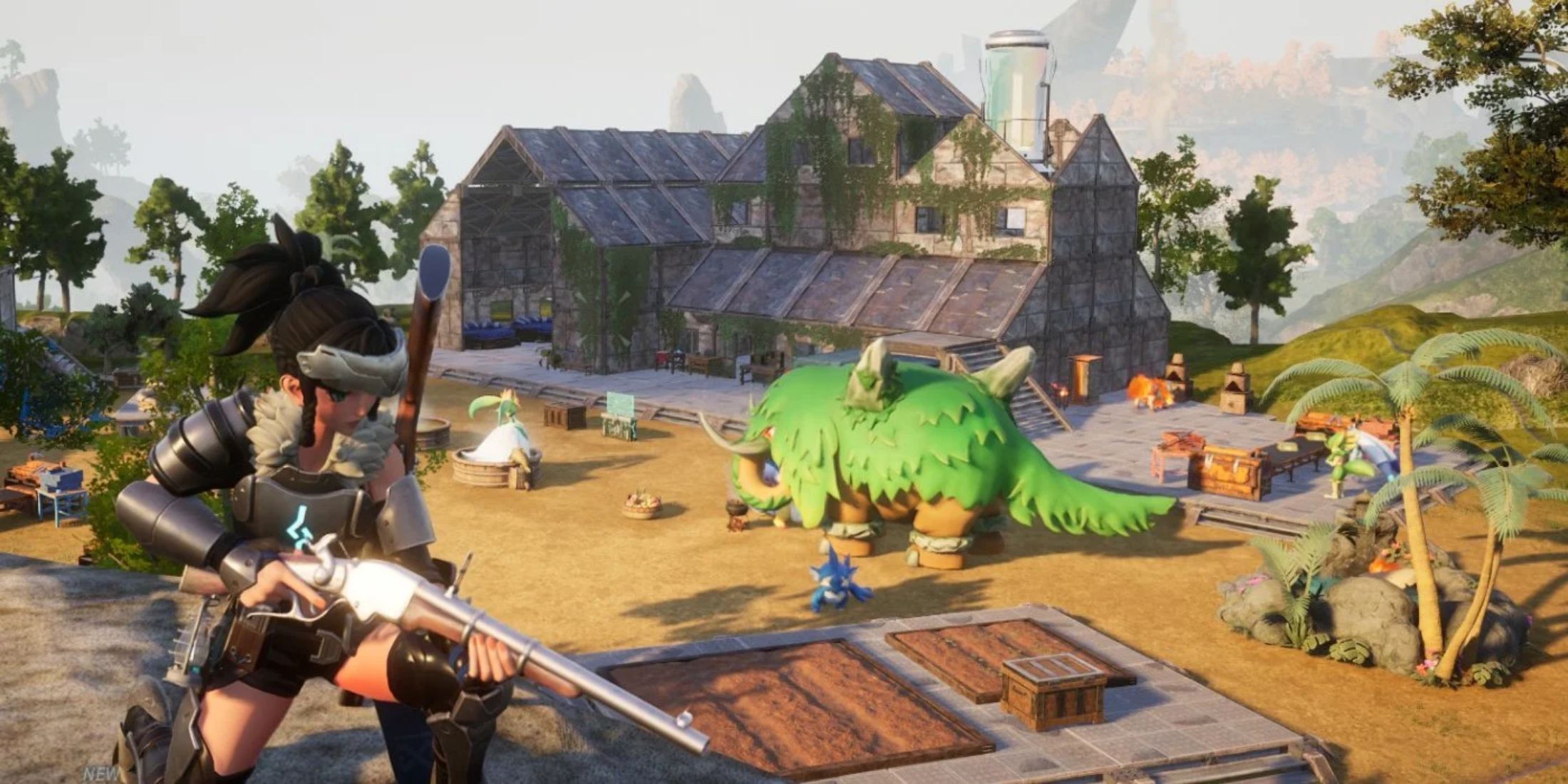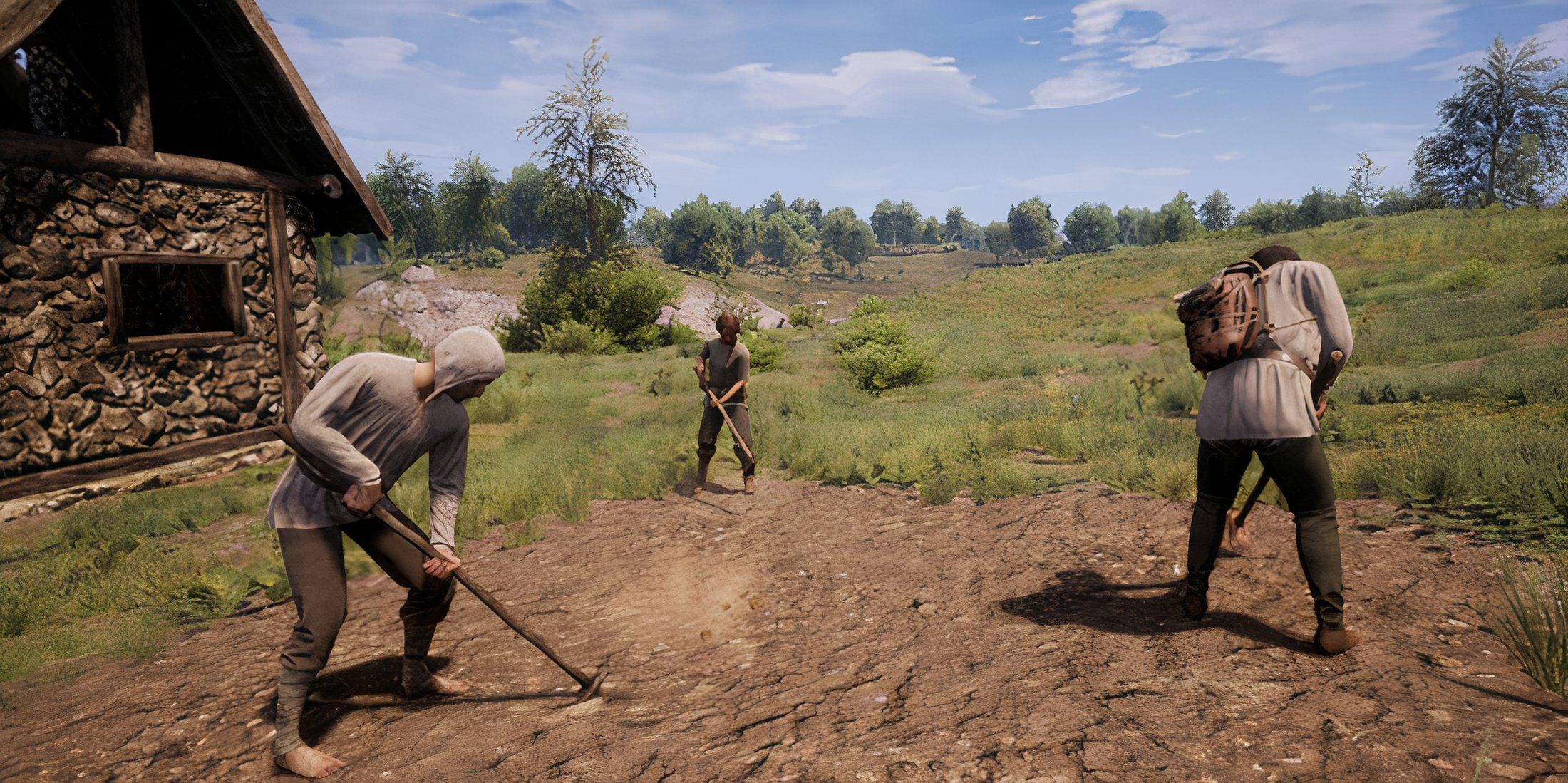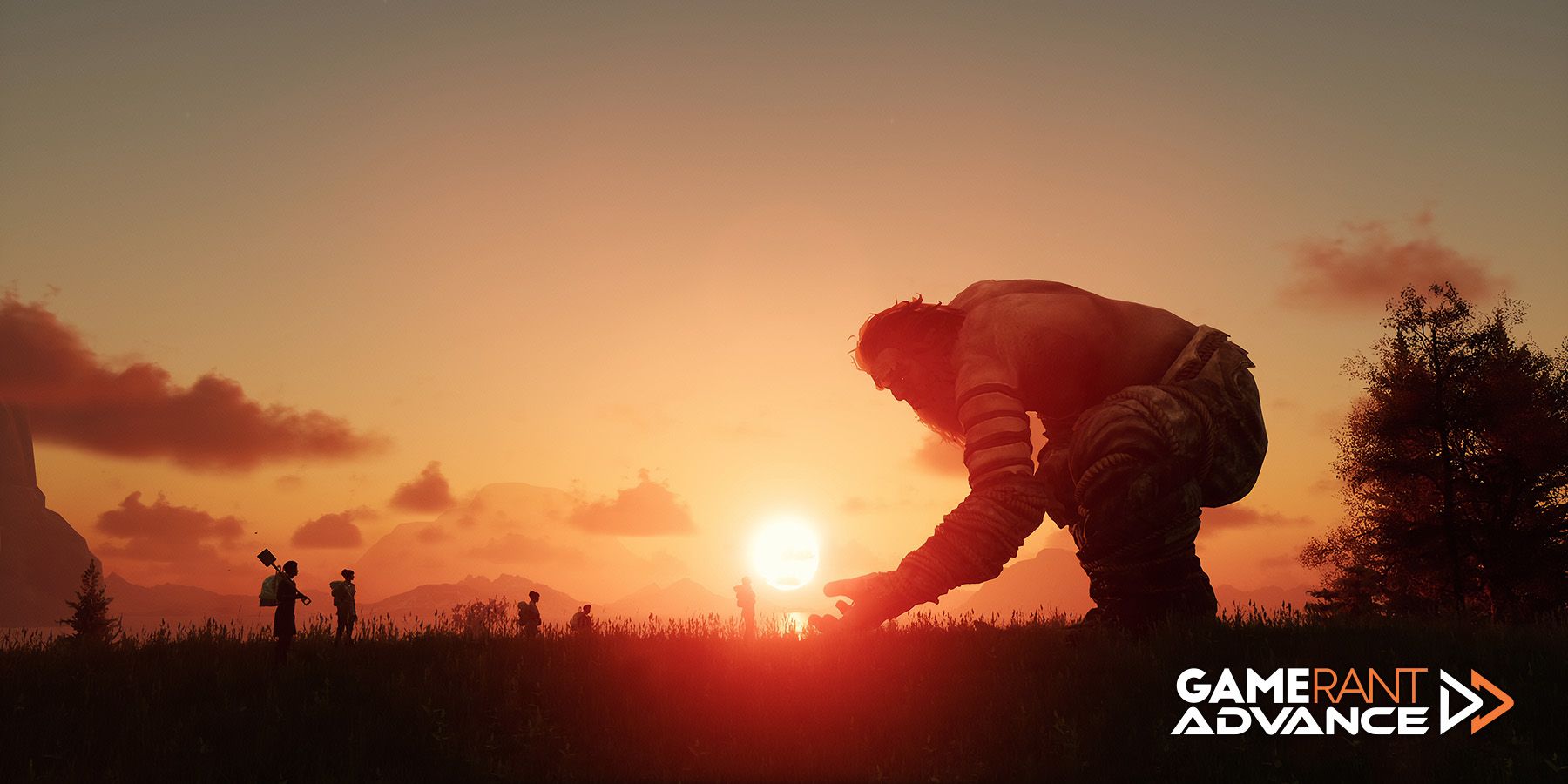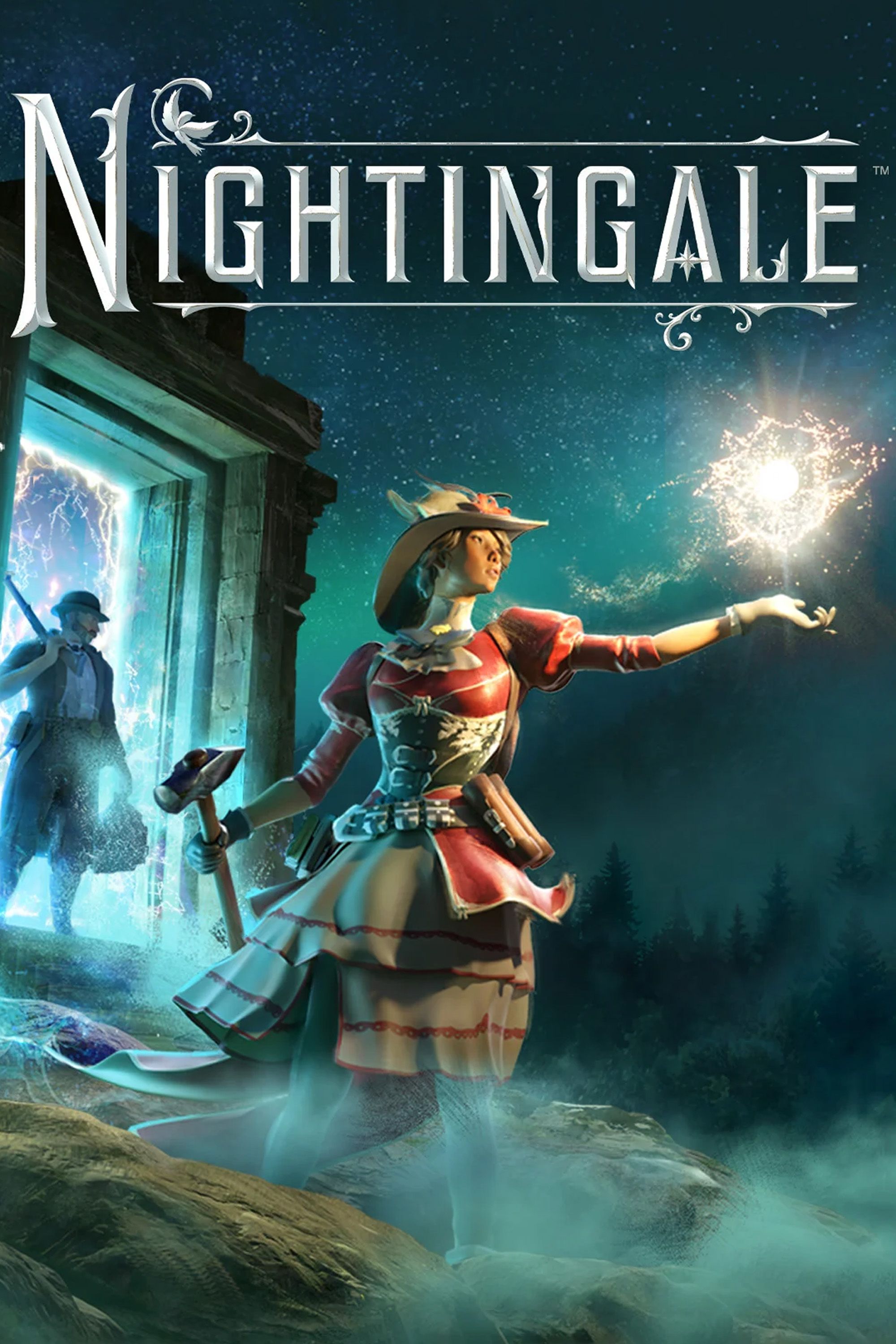Inflexion Games is gearing up for the February Early Access launch of Nightingale —an open-world, PvE survival crafting game set in a Gaslamp Fantasy world disrupted by trans-dimensional portals, magic, and haunting Fae creatures. Nightingale can be played solo or with a party of up to six players, features an emphasis on organic base building and puzzle solving, and has traditional survival combat. The game also boasts an intriguing narrative that incorporates both fictional and historical characters, ranging from Victor Frankenstein to Ada Lovelace.
Game ZXC recently spoke with Inflexion Games CEO Aaryn Flynn and art director Neil Thompson, among others, about all things Nightingale, about the design principles that shaped the game's multitude of realms, and about the technical decisions that help preserve players' creative agency in base building and exploration. The following transcript has been edited for clarity and brevity.
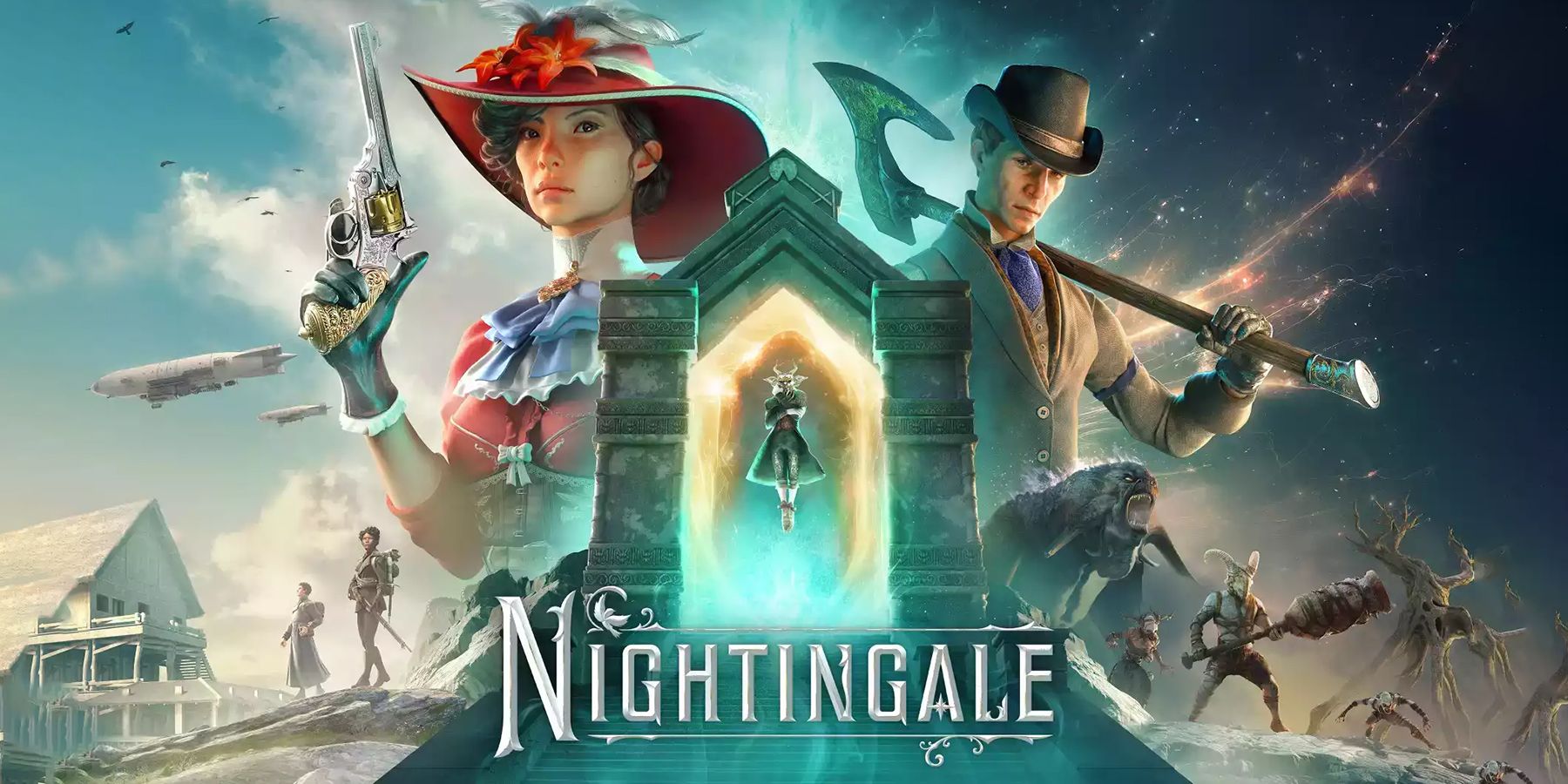
Nightingale Hands-On Preview: A Brave New World
Although the survival-crafting genre is seeing a resurgence as of late, Inflexion Games' Nightingale truly stands out from the pack.
Going Gaslamp Fantasy with Nightingale
Q: How did the team land on Gaslamp Fantasy and aim to bring that to life through the art style?
Thompson: This was a decision that goes back to the very earliest days of the project. We had quickly settled on the idea of an interconnected set of worlds and the concept of portaling between them, so it was a question of a time period that we thought would be interesting from a visual as well as a storytelling perspective. We’d done sci-fi and classic Tolkien-esque fantasy in our time at BioWare with Mass Effect and Dragon Age, and both Aaryn and myself have a deep interest in the explorers of the Victorian period; a time when technology was sufficiently advanced for it to be useful and interesting, but not sufficient to render any challenge non-existent. It was also a time of great scientific advancement that allowed us to create believable technological inventions to interface with aspects of Fae magic (the portals being the most notable).
As an aesthetic choice, we always wanted realistic worlds for our players to inhabit; albeit of a fantastical nature. We are very careful to render material surfaces authentically so that players can relate to the surrounding realms. Stone looks like stone, leather like leather, and the lighting values of a torch or the sun are as accurate as possible so that our players feel truly immersed in a believable and consistent aesthetic. Our characters are stylized as we didn't want to pursue an arms race of doing the most “photorealistic” head; though again, the material response is all important. The skin looks like real skin, the cloth like cloth, so that our stylized characters can sit consistently in our more “realistic” realms.
Q: How did you come up with the visual designs for Realm cards?
Thompson: Firstly, we wanted the cards to be as stylistically varied as possible, as if they had been created over the centuries in a variety of different styles. So we have Victorian illustration, medieval wood carving, Tarot style, illuminated manuscripts… Anything that we thought to be slightly esoteric so that cards aren’t a literal interpretation of their function.
Q: While Nightingale has a Victorian Gaslamp aesthetic, much of the game takes place in natural (and supernatural) locales. How do you incorporate Gaslamp flourishes in straightforward and invented biomes like these?
Thompson: From a lore perspective, humanity has been in the realms for centuries to a greater and lesser degree, so aspects of human architecture have been left behind as a result. This enables us to sow the seeds of our specific time period into “timeless” realms.
You will discover graveyards, statues, outposts, and villages as well as larger POIs that reflect a time of human industry from the NTTC faction that exists within the game, as well as ruins of Fae architecture that hint at aspects of the Fae’s magical nature.
Designing the World of Nightingale
Q: The game looks to contain some epic boss fights with various ferocious creatures, as well as often creative and quirky wildlife that roam the lands, such as the Sere Eoten and Galumph. What inspired their creation?
Thompson: We really wanted to look back into traditional folklore from around the world for our creature designs. Initially, they were more Northern European focused, but as we evolved we started to look further afield for creatures like the Carnute.
The Eotens came out of a desire to have an Ent-like creature that was more tree-like than Treebeard and that could be perfectly disguised in a forest until disturbed. We also like the idea that not all creature encounters have to involve violence by necessity; Eotens and giants can be given offerings to gain rewards peacefully but will defend themselves if attacked.
Q: Footage of homesteads crafted in different realms look like a cozy refuge for Reamwalkers in terms of visuals and sound design – how did the team ensure that, despite some procedural generation, everything ultimately feels cozy?
Flynn: Our building system is built from the ground up to be compatible across tileset themes and not rely on a grid system, allowing players to build wherever they want. Both building and procedural generation systems were developed with each other in mind, and therefore, procedural generation doesn’t interfere with player creativity.
Q: In terms of creating a cozy atmosphere, how might players impact the overall design and atmosphere of their bases?
Flynn: It all starts with which realm the player chooses to build their respite estate in. If players want a classic lush forest environment, they can build in a forest realm. Furthermore, players can unlock various building tilesets to further customize their estates’ style. We leave design and layouts in the players' hands.
Q: Tell us a little about Nightingale’s soundtrack. What influences did you draw on when scoring the game?
Thompson: Because we expect players to spend significant amounts of time in realms either exploring or building out their estates, it is important that the soundtrack doesn’t become repetitive. To that end, we wanted to evoke a more ambient tonal approach that describes the mystery and other worldliness of the Faewilds and that can be punctuated by more dramatic motifs for encounters or combat challenges.
We explored lots of musical influences: the ambient works of artists such as Robert Reich, Michael Stearns, David Sylvian & Holger Czukay, Pete Namlook, Éliane Radigue as well as more mainstream electronic artists such as Vangelis. We try to disguise any “real” instruments as much as possible, retaining an organic feel for our tonal palette and avoiding a traditional symphonic score.
[END]

